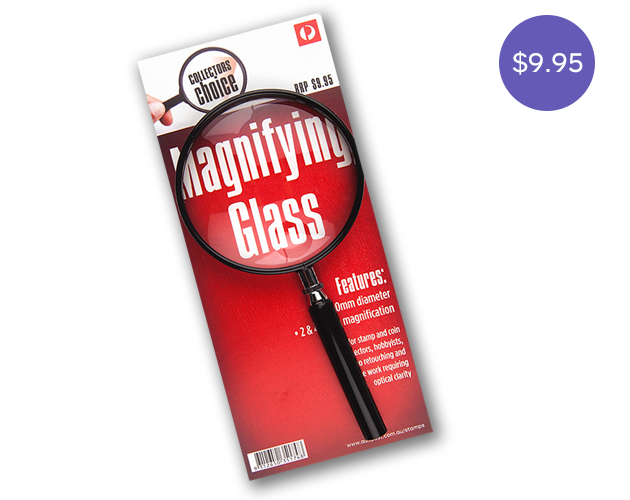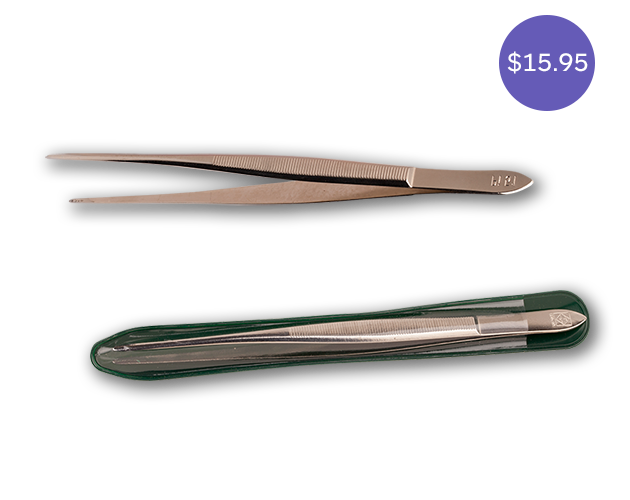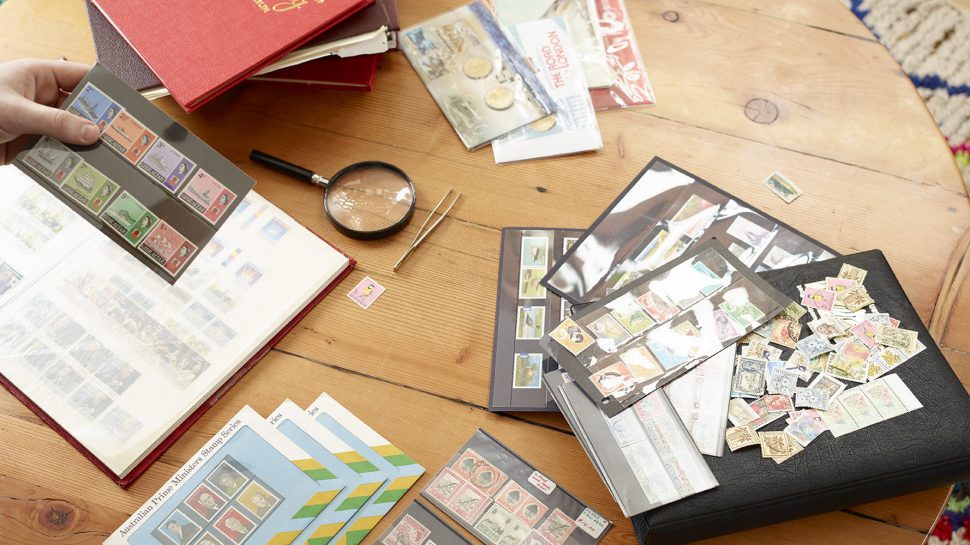Handle with care!
When touching your stamps, do it gently, handling them in the proper manner. They may be worth money in the future, so you should always be careful not to damage them. The best way to hold a stamp is to use tweezers, instead of your fingers. Holding a stamp in your hand makes the stamp dirty, and the grease and sweat on your hand can damage or mark the stamp. Never fold stamps either; the crease will make your stamp less valuable.
When you first start stamp collecting you’ll probably get most of your stamps from envelopes. Firstly, when cutting the piece off the envelope, take care not to cut the stamp, as this will make it worthless. The easiest part to damage (and the most important part not to damage) is the perforations around the edge of the stamp. If your stamp is very old or rare, you’re best to leave it on the envelope, as it may be worth more left that way.
Getting a tool-kit together
To handle your stamps, use tweezers with wide pinchers. Thin pinchers are more likely to squash and damage the stamp.
The wiggly-like edges of stamps are called perforations. You can use a tool called a perforation gauge to measure the number of holes around your stamps that each wiggle makes. A stamp release might be identical in design, but some of the individual stamps might have a different amount of perforations, and this makes them rarer, and possibly more valuable. You can buy a basic gauge from eBay for only a few dollars.
Stamps are tiny (most of ours are either 37.5mm x 26mm, or 26mm x 37.5mm). To study yours more closely, you’ll need a good magnifying glass.
A stamp album will keep your collection neat and organised, and in one place, free from dust and possible damage. Store your album upright, away from direct sunlight. Humidity can ruin stamps if they are kept in a metal or plastic container. If you have any loose stamps or stationery, store them in an archival-quality box instead.
Within your album, you’ll need plastic protectors with individual pockets to put your stamps in, also known as stock sheets. You can also get cover protectors to fit your first-day covers.










